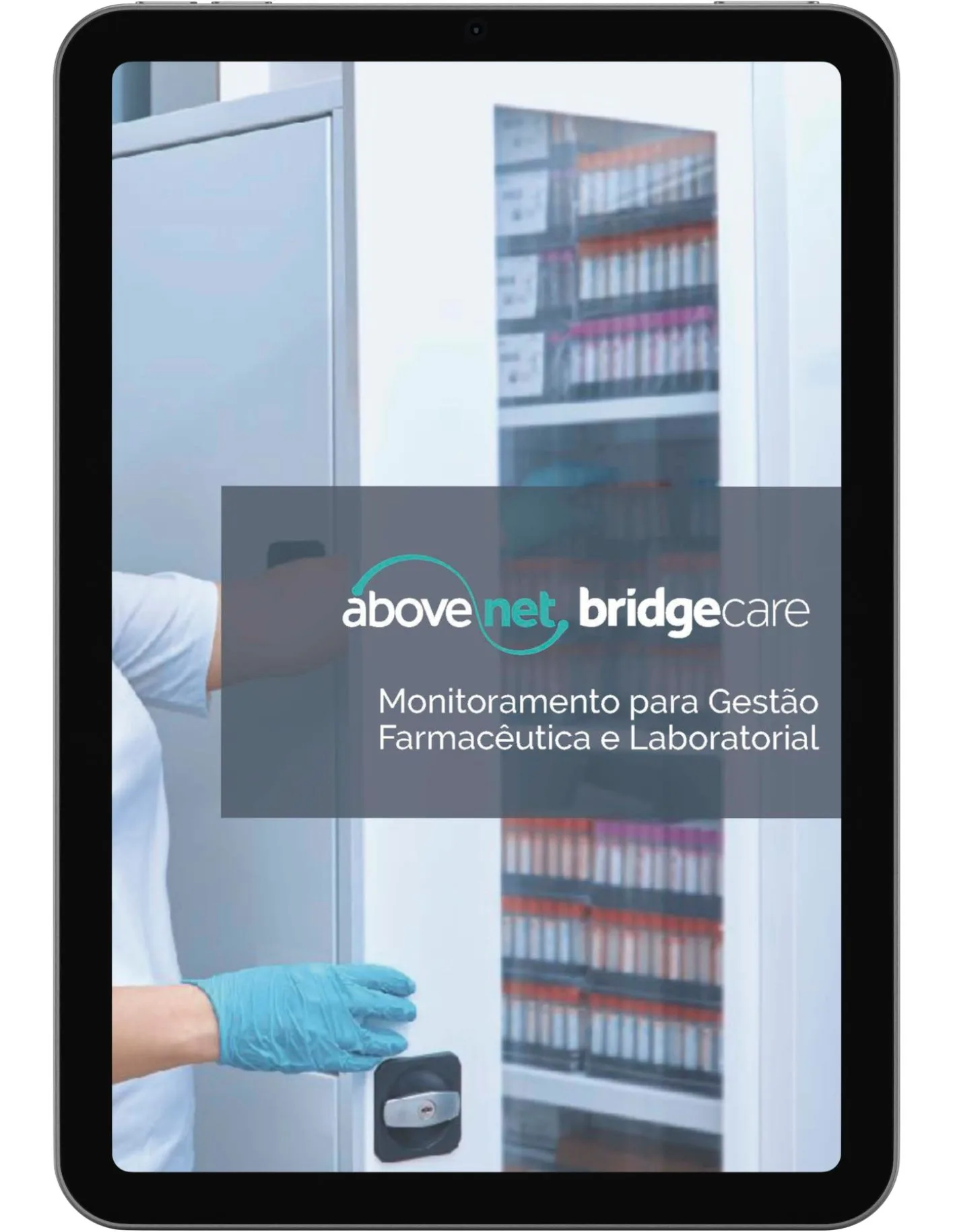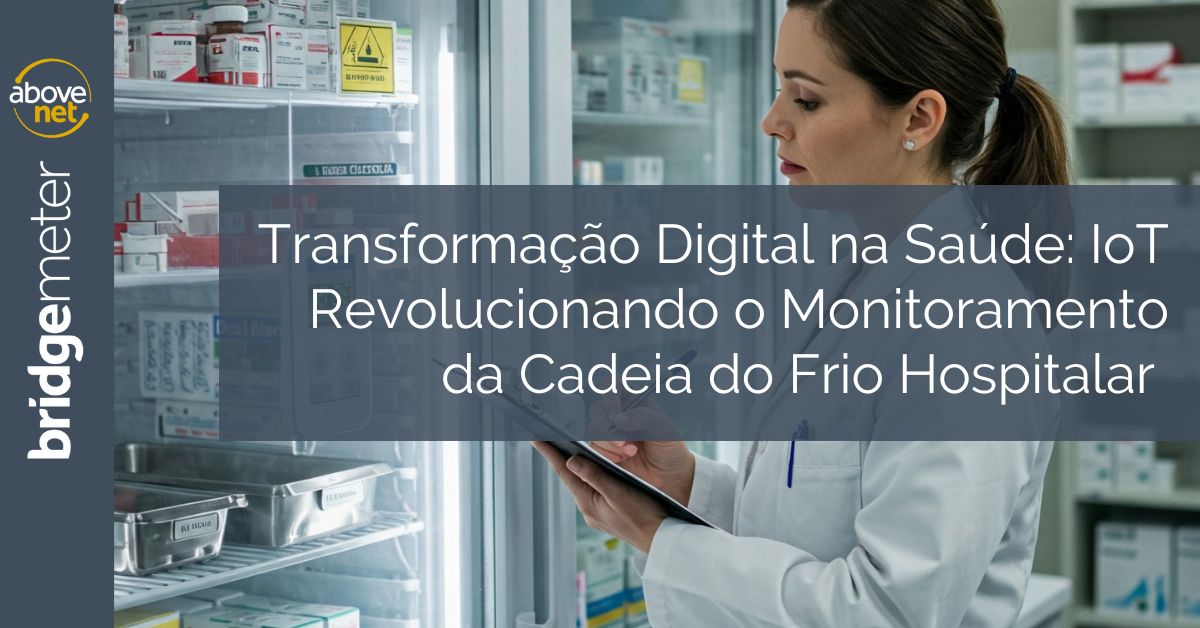Proper storage of medicines, vaccines, biological samples and hospital inputs is one of the essential pillars to ensure patient safety and the effectiveness of medical treatments. The hospital cold chain refers to the set of processes and technologies used to maintain the ideal temperature of these products from manufacturing to administration to the patient.
Small temperature variations can compromise the stability and effectiveness of vaccines and medicines, making them ineffective or even harmful. According to Anvisa, more than 45% of waste wasted annually are related to failures in storage conditions, representing both a clinical risk and a significant financial impact for hospitals.
Compliance with regulatory standards is another critical factor. Institutions such as Anvisa (National Health Surveillance Agency) establish strict guidelines for hospital temperature control. Any failure in this process can result in sanctions, waste of resources and compromise of care quality. Therefore, the accuracy in monitoring the hospital chain is critical to ensure the safety and quality of medical care.
The challenges of manual monitoring in the hospital chain
Many hospitals still manually monitor the cold chain, with periodic temperature verification routines made by responsible professionals. This process involves reading thermometers and registration of data on clipboards, spreadsheets or decentralized systems. Although it is a common practice, this model presents a series of challenges and vulnerabilities:
1. Risk of human failures
Even with a well -trained team, human errors are inevitable. Forgetting or error in the record of a measurement may result in a carelessness that compromises the integrity of the inputs. In addition, manual measurement captures only a specific moment of the day, without providing a complete history about oscillations and operational errors.
2. High time and operating cost
The need for physical displacement to check each cold refrigerator or chamber burden the team and increases operating costs. Nursing, pharmacy or maintenance professionals spend a valuable time on a repetitive and faulty work, rather than focusing on more strategic hospital activities.
3. Lack of alerts in real time
In the manual model, if a refrigerator fails at night or weekend, the problem will only be detected in the next check, which may be too late. The absence of automatic and predictive alerts prevents early identification of failures, increasing the risk and waste of inputs.
4. Regulatory Compliance and Audits
Anvisa requires hospitals to maintain detailed and reliable records of storage temperatures. However, manual systems do not guarantee the integrity of these records, as well as requiring digitization and manual storage, which generates rework, traceability problems, and compliance.
5. Difficulty in data analysis and decision making
With dispersed and decentralized records, the historical analysis of refrigeration equipment performance is compromised. This prevents managers from having a comprehensive view of operational efficiency, making it difficult to implement preventive and strategic measures.
Given these challenges, it is clear that manual monitoring is no longer enough to ensure the safety of the hospital chain. The adoption of innovative technologies, such as the Internet of Things (IoT), represents an essential way to modernize and optimize this process.
IoT's role in hospital automation
The Internet of Things (IoT) is a technology that connects devices and sensors to the internet, allowing the collection and analysis of data in real time. In the hospital sector, this innovation has been transforming the way equipment, processes and information is managed.
In the context of the hospital chain, IoT enables the use of intelligent sensors that continually monitor temperature and other critical storage variables. These devices send data in real time to automated systems, reducing the need for manual checks and allowing an agile response to any irregularity.
However, many current solutions still depend significantly on human intervention, requiring operators to identify trends manually. Most systems are limited to issuing alerts only when operational parameters are exceeded, forcing specialized teams to monitor 24 × 7 panels or to perform daily retroactive analysis, which increases the risk of non-detected faults on time.
The ideal solution should integrate operational intelligence with predictive analysis, crossing multiple parameters to in advance identify behavior trends and changes, either by mechanical failure or human error. In addition, it needs to consider the different levels of responsibility within the organization, scaling notifications proactively to accelerate problem solving and ensure the integrity of the cold chain.
Bridgemeter: The smart solution for hospital chain monitoring
Bridgemeter , developed by Above-Net safe and efficient hospital chain monitoring. Through sensors connected via IoT, the platform offers complete control over equipment, engines, power parameters and the temperature of critical inputs.
Unlike traditional methods, Bridgemeter provides real -time remote monitoring, automatically recording refrigerator, freezers and cold cameras temperatures. In addition, it follows variables such as humidity and doors, offering a comprehensive view of environmental conditions and facilitating the diagnosis of possible irregularities.
With Bridgemeter, hospitals and laboratories can eliminate human failures, ensure compliance with sanitary regulations and, above all, anticipate possible operational failures. The solution uses advanced analysis and intelligent multi -parameter crossing, allowing the identification of trends and the prediction of real -time anomalies, ensuring the integrity and efficiency of processes.
How Bridgemeter solves the challenges of monitoring the hospital chain
Continuous monitoring and behavioral change
Unlike manual monitoring, which depends on periodic verifications and is subject to human failures, Bridgemeter collects, storage and continuous analysis of cooling, freezers and cold chambers. This intelligent approach allows the immediate detection of oscillations, anticipating possible deviations that could compromise the quality and safety of stored inputs.
Reduction of Risks and Smart Real Time Alerts
One of the main weaknesses of traditional monitoring is the lack of immediate notifications in case of failures. Bridgemeter responsible through traceable notifications in the application or via email. This proactivity allows the maintenance team to take immediate corrective measures before the problem gets worse, avoiding losses of essential inputs and ensuring the safe continuity of operations.
Time Optimization and Reduction of Operating Costs
With automated monitoring, the hospital eliminates the need for frequent manual rounds to verify temperatures, as well as dependence on an exclusive monitoring center. This releases health professionals for more strategic activities, reducing operating load and costs associated with team displacement.
Bridgemeter maintenance module allows the scheduling of preventive maintenance, the centralization of all documentation and access to the complete history of each equipment. This intelligent management reduces logistics spending and avoids high costs with emergency repairs, ensuring greater efficiency and reliability in cold chain control.
Records and compliance with ANVISA
Bridgemeter automatically stores and documents all temperature measurements and other operational parameters, creating a complete, safe and easily accessible audit history . This automation eliminates the need for manual records in spreadsheets or clipboards, reducing errors and optimizing team time.
The solution also ensures full compliance with regulatory standards, such as Anvisa's guidelines, when protecting data against editions or manipulations. Thus, the hospital has reliable and fraud proof documentation, essential to ensure safety and traceability in the hospital chain.
Intelligent solutions for increasing accuracy
Bridgemeter wide range of sensors. ABOVE Above-Net maintains strategic partnerships with various manufacturers that offer innovative solutions, capable of simulating the thermal behavior of stored inputs. This allows an accurate assessment of the impact of temperature fluctuations on vaccines, medications and biological samples, providing a realistic view of storage conditions.
With this technology, Bridgemeter offers more accurate measurements, significantly reducing fake alarms and increasing the reliability of the operation, ensuring greater safety and efficiency in cold chain control.
Predictive analysis and failure diagnosis
Unlike conventional systems, Bridgemeter goes beyond the simple data record: it performs advanced predictive analyzes, identifying trends that may indicate imminent failures on cooling equipment. If, for example, an engine is having efficiency loss or if the temperature begins to oscillate atypically, the system anticipates the problem and sends notifications to the technical team. This enables preventive actions before a total failure compromises the operation, ensuring greater safety and continuity of processes.
Compatibility with different equipment and systems
Bridgemeter is a highly flexible solution designed to integrate with any type of refrigerator, cold camera or hospital freezer, regardless of the manufacturer or model . Its ability to intervene with various hospital systems, such as ERPs, HIS, Lis and PACS, allows us to consolidate all information in a unified central repository. This ensures a clean, standard and affordable database, providing more efficient management and precise analysis for strategic decision making.
Conclusion
Bridgemeter transforms hospital chain management, offering safety, efficiency and economy . Its implementation not only reduces waste, but also optimizes the maintenance team and ensures regulatory compliance, resulting in a fast and significant return on investment (ROI).
Do you want to optimize hospital chain monitoring? Contact Above-Net for a free demonstration and find out how Bridgemeter can revolutionize your operation!

Application
Monitoring for Pharmaceutical and Laboratory Management
The Bridgemeter monitors temperature and humidity of pharmaceutical and laboratory storage units and fires automatic notifications for the responsible teams before a failure becomes irreversible
With Bridgemeter all teams work in an integrated manner: clinical engineering, responsible pharmaceutical and the manager of the clinic or hospital.


